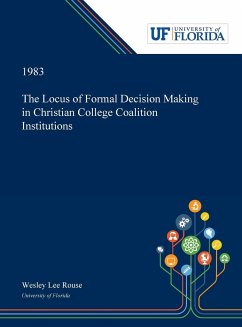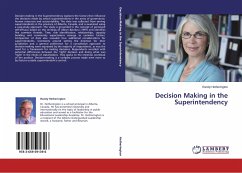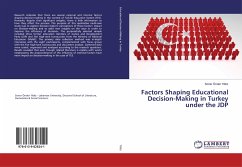Abstract: The problem was to determine the perceptions of those involved about the locus of formal decision making relative to academic, student affairs, development, and administration decisions for Coalition colleges. Answers were sought to questions about which specific position incumbents/units were perceived to be involved in making and participating in making decisions, and differences in perceptions based on respondent role (trustees, administration, administration/faculty, faculty) and on level of involvement (no involvement, provides information, recommends, makes decision). Data were obtained by means of a decision point analysis instrument from 59 of the 69 institutions with 293 returns. Analysis of variance was utilized to determine differences in perceptions. Faculty members, academic deans, and presidents were perceived to be major decision makers in academics; deans of students and presidents in student affairs; trustees, presidents, and business officers in development; and trustees and presidents in administration. Most frequently perceived to participate were chairpersons and academic deans in academics; presidents. academic deans, deans of students, and business officers in student affairs; presidents and development officers in development; and presidents, academic deans, and business officers in administration. Based on position, there were significant differences about who makes the decision for 6 of the 19 items and about who participates for 15. The significant differences in who makes the decision were for adding a course, changing a grade, changing an admission policy, building a building, changing the purpose of the college, and changing the bylaws. Based on level of involvement, there were significant differences about who makes the decision for 3 of the 19 items. These were for adding a course, beginning a fund-raising project, and filling an administrative vacancy. It was concluded that there was considerable unanimity of opinion about who makes decisions, but little about who participates. The most frequent decision makers were those at the top of the hierarchy (trustees and presidents), and those who least frequently made the decisions were those at then lower levels (chairpersons and faculty). Dissertation Discovery Company and University of Florida are dedicated to making scholarly works more discoverable and accessible throughout the world. This dissertation, "The Locus of Formal Decision Making in Christian College Coalition Institutions" by Wesley Lee Rouse, was obtained from University of Florida and is being sold with permission from the author. A digital copy of this work may also be found in the university's institutional repository, IR@UF. The content of this dissertation has not been altered in any way. We have altered the formatting in order to facilitate the ease of printing and reading of the dissertation.








